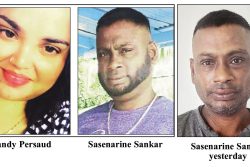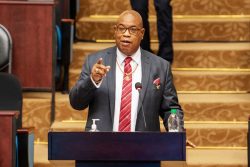Dear Editor,
In the six pieces that appeared in SN on the issue of Burnham and the Cold War, three are of the view that there is some such thing called the Cold War with a significant influence on events in Guyana between 1953 and 1991. The other three pieces insist on demonising Burnham and see him as the chief culprit of the period. On the other hand, three authors prefer the emphasis on the Cold War as the defining moment in Guyanese politics, while two see Burnham as the band master of his own making. I will want to make one final point – if you allow.
Our schooling in the 1960s taught us that one way in seeing differences in events or historical circumstances is the use of models. The favourite one that had significant resonance is the Keynesian Model of an economy – what was called Keynesian demand management or state-led growth that lasted from WW II to the mid-1970s. Another expression for the same thing was offered by the French and went under the name of the “longue duree”, the French Annales School of History, made popular by Ferdinand Brudel. It simply means that events, happenings or unique moments in history can best be appreciated or understood in longer time frames – their rise and fall, complete eradication or simply gradually fading away. One popular form that is still with us, made its appearance in the 1960s in the work of Thomas Kuhn, The Structure of Scientific Revolution. And while it borrowed and followed in the tradition of those that went before, it demanded stricter commitment to the parameters of its own practices and the need to follow the rigor of formal rules.
Other communities, cultural groups and religious practices adopted many of the same lineaments to construct a unique sense of themselves and communities. Hindus, for example, have what is often called ages that pass under such names as Satyug, the age truth and sincerity, or Kalyug, the age of Kali or darkness. One other point on this is that in its formal scholastic sense, models usually carry internal operational units sometimes called determinant or indeterminant variables. These are usually deployed as a means of organising the operational units where the determinants take precedence over the indeterminants. In other words, and purely metaphorically, this is where the big boys tell the little boys what to do. In any research we undertake, special interest and concern is attached to the way in which our variables are placed, and the attendant authorial authority they embody. Sorry for the excursion but it is only intended to draw attention to the popularity of the practice and the sense of common understanding it brings to our awareness of events and circumstances.
It also serves to bring out in a strict and specific sense what we mean when we say that the Cold War for us started in 1953 when the British landed in British Guiana with Gun Boats and rifle-bearing Tommies. That same Cold War also ended in 1991 when the Soviet Union collapsed, Arthur Schlesinger publicly apologised to Jagan for the wrongs the US committed in Guyana, and President Jimmy Carter visited in 1992 to inform Mr. Hoyte that the Cold war was over.
Sincerely,
Rishee Thakur






